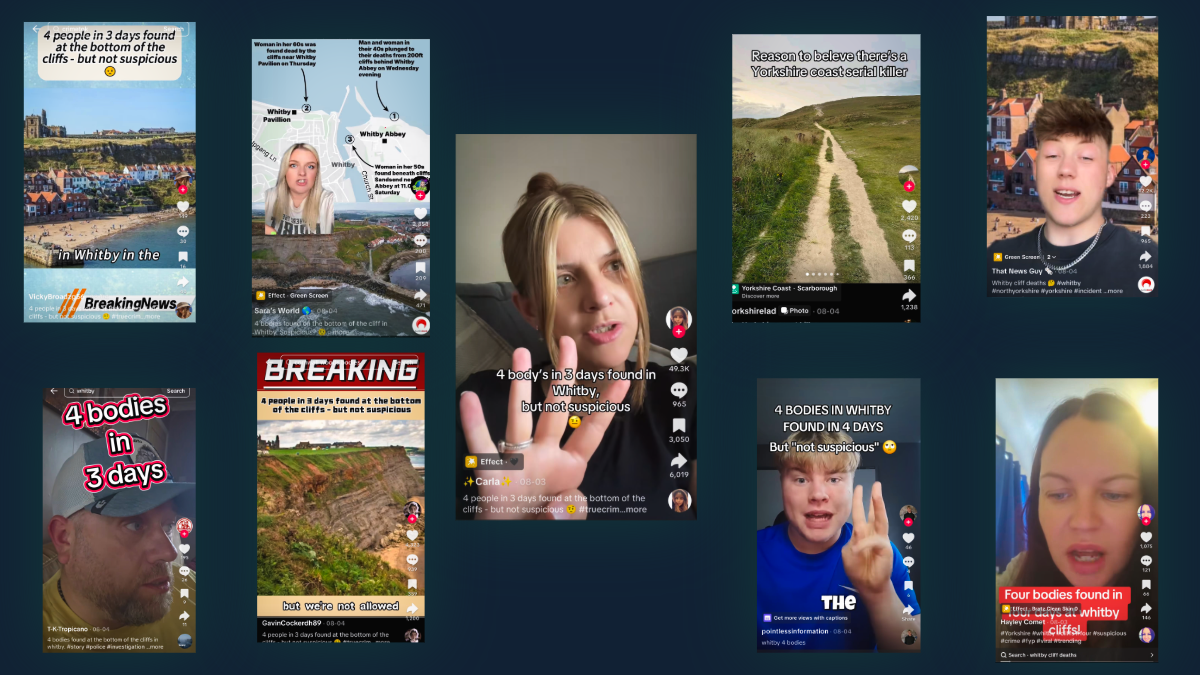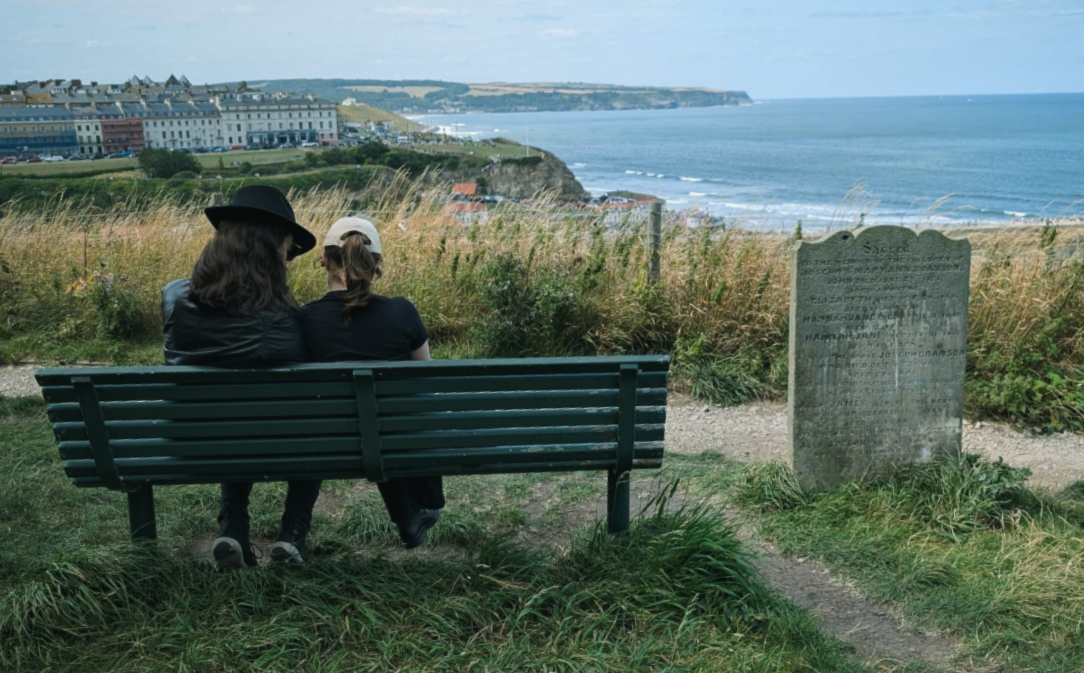August has a particular hold on Whitby. In 1890, on the 8th of the month, an Irish holidaymaker named Abraham Stoker wandered into the town’s library and discovered the tale of a Wallachian prince known as the Devil — “Dracula”, in his native tongue.
Seven years later, in Stoker’s own book, August became the month a ship ran aground beneath Whitby’s eastern cliff. On board: Dracula as we know him, and with him, a gothic spell that still hangs over the town.
This August, that spell has conjured a new horror story, told this time not by a novelist, but by a ghoulish coven of TikTokers.
The facts, such as they are, run like this.
On Wednesday, 30 July, just after 7:15pm, a member of the public called North Yorkshire Police after seeing a man and woman in their 40s jump from the cliffs below Whitby Abbey. The next day, shortly before 1pm, a woman in her 60s fell from a cliff on the other side of town. Two days later, on Saturday 2 August, a woman in her 50s was found dead three miles away after another fall. The following afternoon, a man in his 30s was talked down from the clifftops above Whitby.
In other words, at the height of Whitby’s tourist season, four people fell to their deaths in as many days, with a fifth prevented from joining them.
In the days that followed, as the community mourned, local charities urged residents to “keep in mind families and loved ones of those” who had died, and to “avoid speculation before the facts are known”. The regional press, in response, ran brief reports about the incidents.
Online, however, and on TikTok in particular, speculation bloomed. With police declining to say more than that the deaths were not being treated as suspicious, a parade of true-crime and paranormal content creators turned their cameras on Whitby.
“We’re supposed to believe these deaths aren’t suspicious,” declared Carla, the Yorkshire-based creator of a viral video that racked up more than a million views and 50,000 likes. “That all four people accidentally fell or slipped. I’m not buying it.” Another video, shared more than a thousand times, was titled: “Reason to believe there’s a Yorkshire coast serial killer.”

In the comments, theories multiplied. Some fixated on the idea of a serial killer; others folded the deaths into a narrative of Britain’s “new crimewave”. Dozens announced they were now too afraid to visit Whitby. The next day, Carla hosted a live Q&A in which she explained that she had a degree in criminology.
Two weeks on, no serial killer has been found, and there is no indication of foul play. What has emerged instead is a more complicated story: about what happens when private tragedy collides with the content economy, and when a small seaside town becomes a backdrop for other people’s horror stories.
To tell it, I travelled to Whitby to speak with locals — and tracked down the TikTokers feasting on their trauma.
In the UK, reporting on suicide is bound by strict guidelines, both to spare families unnecessary distress and to reduce the risk of copycat behaviour. The cautionary example, still cited by media critics, is the coverage of dozens of suicides among young people in Bridgend, south Wales, in 2007 and 2008. Some reports speculated about “an internet suicide cult” and were accused of glamourising the deaths. At one point, police asked the media to stop covering the incidents altogether.
